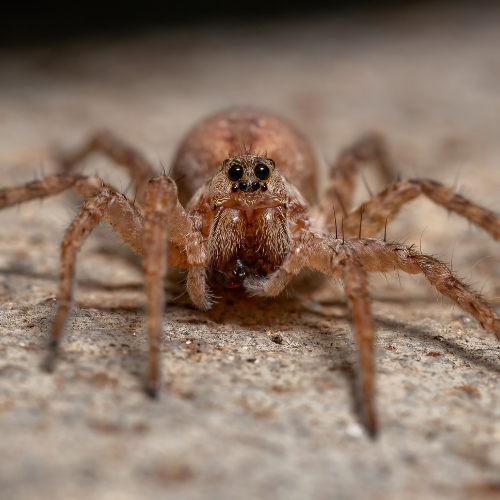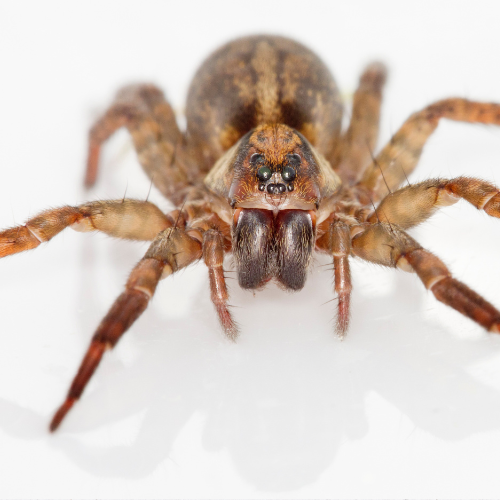Wolf Spider
Introduction to
Wolf spiders are large, agile hunters known for their impressive speed and excellent vision. Unlike many other spiders, they do not build webs to catch prey but instead actively hunt down their food. These spiders can be found in a variety of environments and are often encountered in homes and gardens. While their appearance can be intimidating, wolf spiders are generally harmless to humans. This article explores the recognition, biology, habits, prevention, and professional handling of wolf spiders, providing a comprehensive guide to understanding and managing these remarkable arachnids.
Recognition
Wolf spiders are characterized by their large, robust bodies and long, powerful legs. They can range in size from 0.5 to 2 inches in body length, with some species appearing even larger when including their leg span. Their coloration is typically brown, gray, or tan, often with distinct markings or stripes that provide camouflage. Wolf spiders have eight eyes arranged in three rows, with the middle pair being particularly large and prominent. This eye arrangement gives them excellent vision, which is essential for their hunting lifestyle. They are often seen scurrying across the ground or hiding under debris, rocks, or vegetation.
Biology
Wolf spiders belong to the family Lycosidae and are found all over the world. They are solitary hunters, relying on their speed and vision to capture prey, which includes insects and other small arthropods. Wolf spiders do not spin webs to catch food but do produce silk for creating egg sacs and retreat sites. Females carry their egg sacs attached to their spinnerets, and after the spiderlings hatch, they ride on the mother’s back for several weeks. Wolf spiders undergo several molts before reaching maturity and can live for up to two years. Their robust bodies and agile hunting techniques make them effective predators in their ecosystems.
Habits
Wolf spiders are primarily nocturnal and spend their nights actively hunting for prey. During the day, they hide in burrows, under rocks, or within leaf litter. These spiders are highly adaptable and can thrive in a variety of environments, including forests, grasslands, and human habitations. They are often encountered in gardens, basements, and garages. Despite their intimidating appearance, wolf spiders are generally shy and prefer to flee rather than confront humans. However, if threatened, they can deliver a painful bite, although it is not considered medically significant for most people.
Prevention
Preventing wolf spider infestations involves reducing their access to shelter and prey. Seal cracks and crevices around windows, doors, and foundations to prevent spiders from entering your home. Use screens on windows and doors to keep spiders out while allowing ventilation. Maintain a clean and clutter-free environment, both indoors and outdoors, to eliminate potential hiding spots. Regularly clean and declutter basements, garages, and storage areas. Reduce outdoor lighting to minimize attracting insects, which serve as food for spiders. Keeping your home and surroundings clean and free of other pests is key to preventing wolf spider infestations.
Professional
If wolf spiders become a persistent problem, professional pest control services can provide effective solutions. STL Pest Control offers specialized management plans to address wolf spider infestations. Their trained technicians will conduct thorough inspections to identify entry points and areas of spider activity. They apply targeted treatments to eliminate spiders and their prey while offering preventive measures to keep spiders from returning. Professional pest control services ensure a thorough and lasting solution to spider infestations, maintaining a safe and comfortable living environment.



Our Office









